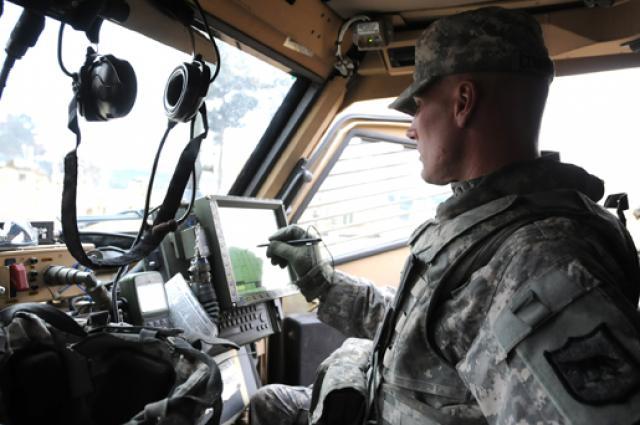The U.S. Army’s System of Systems Engineering effort has identified a number of computing environments through which to implement G6-defined standards, service officials said.
When adopted into the foundational software and hardware, these standards defined by the Army’s chief information officer, will define the common operating environment, or COE.
The idea of the COE is for different systems — like Battle Command applications, sensors and vehicles on the move — to more efficiently be able to communicate.
The COE is an initiative aimed at addressing interoperability between systems and agility in development/deployment. It also focuses on getting to open architecture to leverage industry innovation, cyber-hardened foundations for security and reducing lifecycle cost of systems.
The computing environment, or CE, structure is geared toward organizing the Army environment from the sustaining base to the tactical edge, including, sensors, command posts, mounted vehicles, hand-held devices, Mission Command platforms and numerous applications in real time on the battlefield, service officials explained.
The Army will establish and enforce stringent technical standards for software infrastructure which will guide material development and ensure built-in interoperability, said Terry Edwards, director of System of Systems Engineering for the Office of the Assistant Secretary of the Army — Acquisition, Logistics and Technology.
Also, the COE will be aligned to industry trends, best practices and product while making the necessary investments in complimenting security components to support DoD-unique requirements. This will enable the Army to quickly take advantage of commercial innovation and will spur competition, Edwards added.
The COE is being designed to tell industry upfront and with certainty the parameters within which Army technology (hardware and applications) must fit. The plan is to establish an Ecosystem for each of the CE’s so that developers have access to architectures, foundational products and certification environments required for developing applications.
“What we are saying is we want to go to a model where we provide these foundation pieces and make them available — that will then let everybody who wants to build applications build them on this common foundation,” Edwards said.
Edwards compared the Army effort to commercial endeavors such as those undertaken by Apple and Google.
“If you look at what Apple and Google have done, you will see that the Apple foundation and the Android foundation have a bunch of software that determines their environment,” Edwards explained. “When you go to build an app, it does not take a long time to build because a lot of the pieces are already there.”
“All those are common pieces of software that have been provided by the Apple and Android environment. People take that software and they build their application on top of that,” he said.
“The computing environments allow us to organize our programs in such a way that there is greater efficiency due to greater collaboration amongst the PMs [Program Managers],” said Monica Farah-Stapleton, lead for COE.
A key rationale for the COE is to ensure various Mission Command applications all work together on a common software foundation, Farah-Stapleton explained.
The CEs will have a minimum standard configuration that supports the Army’s ability to produce and deploy high-quality applications rapidly. They will reduce the complexities of configuration, support training and reduce life-cycle cost.
By focusing on the “control points,” strict compliance to standards will ensure interoperability between CEs, Edwards explained.
Edwards and his team are working on establishing the framework and governance structure as part of the implementation plan to execute this vision of the COE. This is a huge undertaking that requires a change on how we think and how we currently develop systems, Edwards said.
When asked how this differs from what the Army did on the FCS program, Edwards said “while the concepts are the same, the idea here is to harness software from successful existing systems within a CE and establish that as “foundational software” essentially build on successes.
When implemented, the COE will give the warfighter and the generating force unprecedented capability, flexibility and agility to exploit information, Edwards added.










